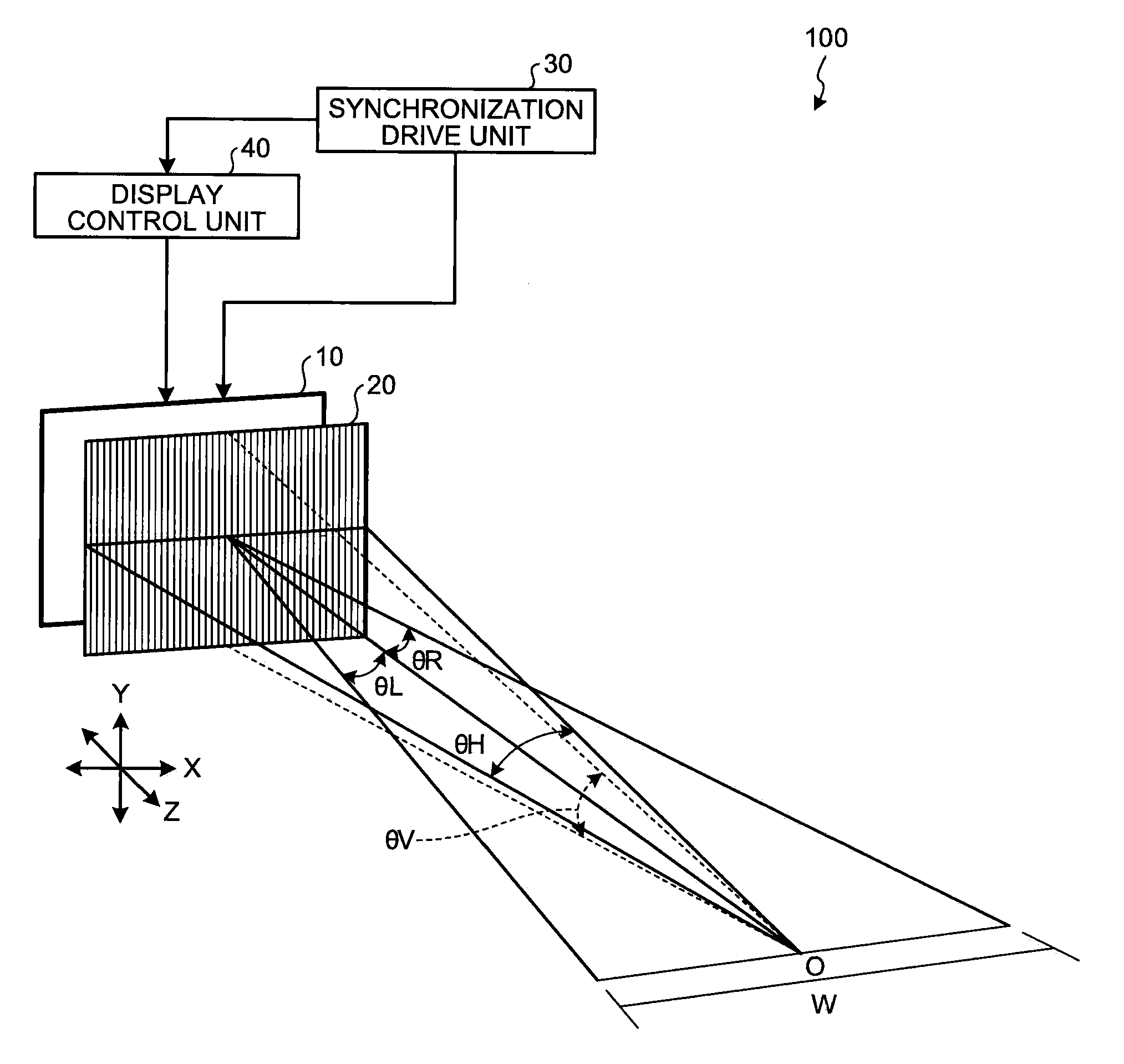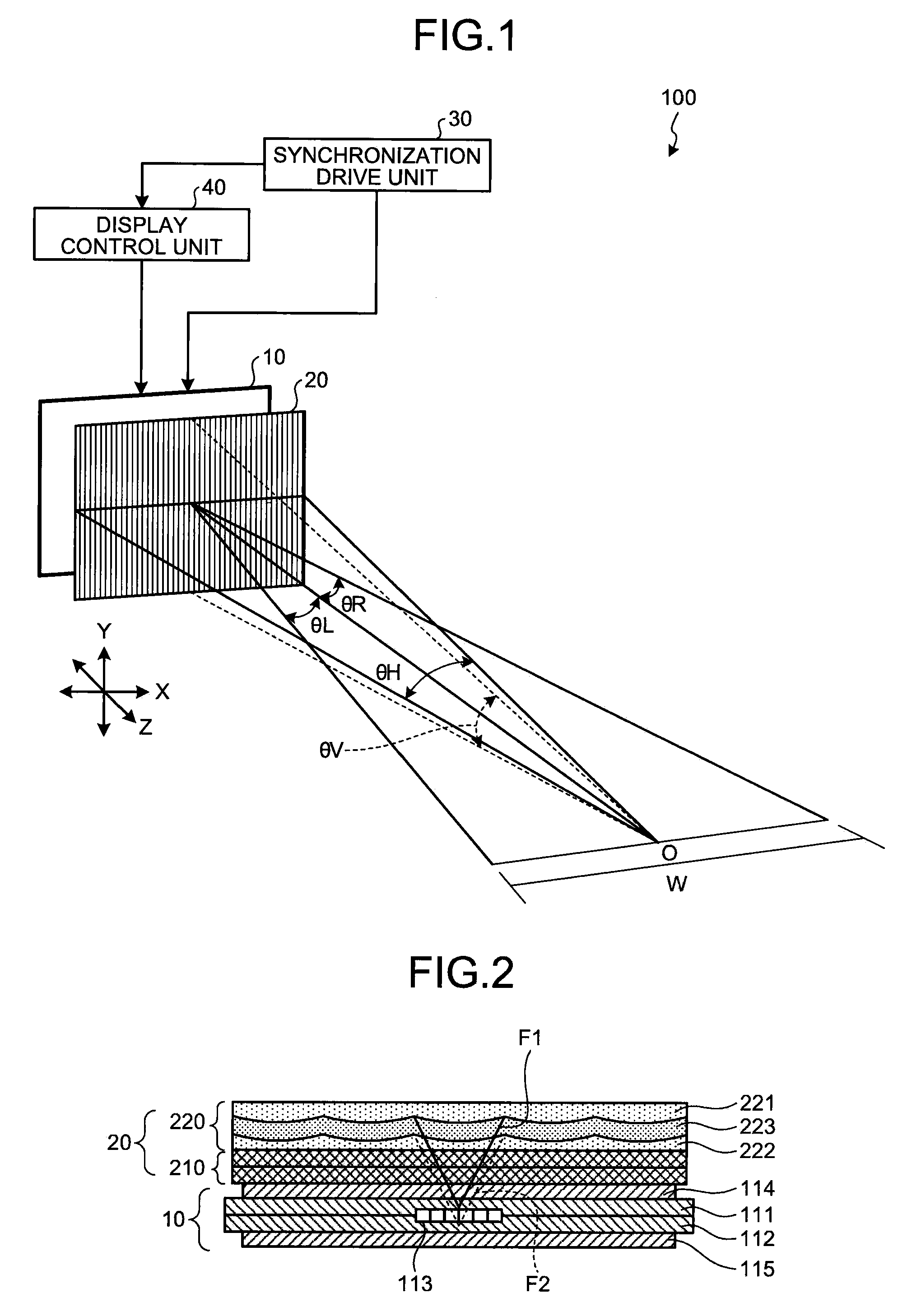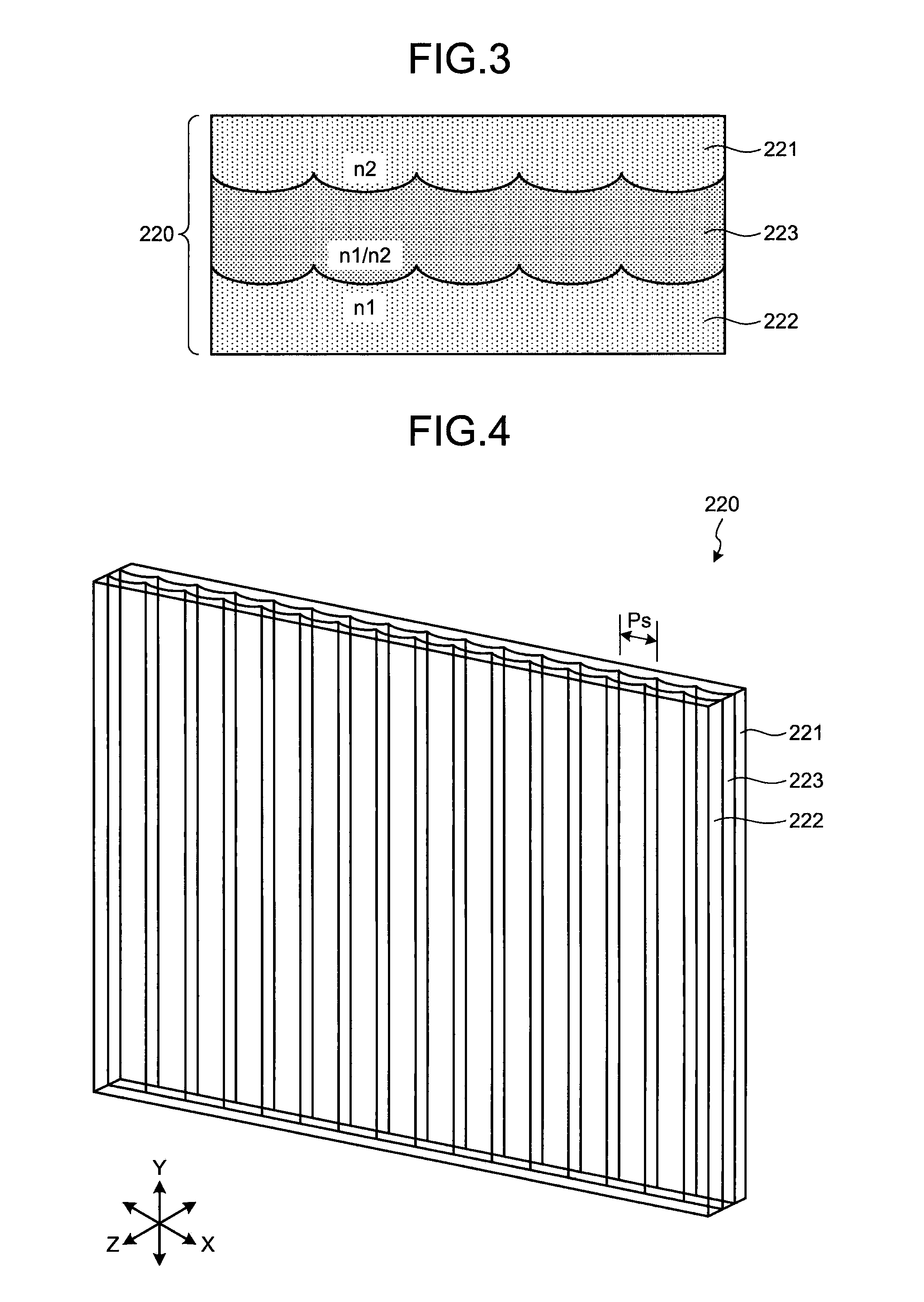Stereoscopic-image display apparatus
a stereoscopic and display apparatus technology, applied in the field of stereoscopic image display apparatus, can solve the problems of difficult to see, inability to achieve satisfactory performance for stereoscopic display of multiple parallax, and inability to improve the comprehensive performance of stereoscopic display
- Summary
- Abstract
- Description
- Claims
- Application Information
AI Technical Summary
Benefits of technology
Problems solved by technology
Method used
Image
Examples
first embodiment
[0041]A configuration of the elemental-image display unit 10 and the lens array unit 20 (hereinafter, “display unit” collectively) according to the present invention is explained below in detail.
[0042]FIG. 2 is a schematic diagram illustrating a cross-section in a horizontal direction (X axis direction in FIG. 1) of the display unit according to the first embodiment. As shown in FIG. 2, the elemental-image display unit 10 includes glass substrates 111 and 112, a pixel plane 113 of a liquid crystal panel that is arranged between the glass substrates 111 and 112, and polarizers 114 and 115 that are arranged on outer surfaces of the glass substrates 111 and 112. Each pixel constituting the pixel plane 113 is constituted by sub-pixels that have three color components (red, green, blue) in at least one of a horizontal direction and a vertical direction as described later.
[0043]The lens array unit 20 includes a polarization switching cell 210 and a lens array lamination layer 220. As the ...
second embodiment
[0075]FIG. 12 is a schematic diagram illustrating a cross-section of a display unit according to the As shown in FIG. 12, a lens array unit 50 includes the polarization switching cell 210 and a lens array lamination layer 510. The lens array lamination layer 510 is constituted by substrates 511 and 512 and mediums 513, 514, and 515 in three layers that contact on two interfaces that form curved surfaces of a lens. The form of the curved surfaces of the lens can be a fly-eye lens form or a cylindrical lens form (form of lenticular sheet).
[0076]FIG. 13 is a partial enlarged view of the lens array lamination layer 510. As shown in FIG. 13, the mediums 513 and 515 are arranged such that convex curved surfaces of the lens are opposite to each other, and the medium 514 is sandwiched between the mediums 513 and 515. The mediums 513 and 515 are a refractive-index anisotropic medium in which the refractive index changes corresponding to the polarization direction of incident light. The medi...
third embodiment
[0093]FIG. 17 is a schematic diagram illustrating a cross-section in a horizontal direction of a display unit according to the As shown in FIG. 17, a lens array unit 60 includes a polarization switching cell 210 and a lens array lamination layer 610. The lens array lamination layer 610 is constituted by a substrate 611 in a flat plane form, two substrates 612 and 613 having curved surfaces in a lens array, and mediums 614 and 615 in two layers that are filled between the substrates. The form of the curved surfaces of the substrates 612 and 613 can be a fly-eye lens form or a cylindrical lens form (form of lenticular sheet).
[0094]FIG. 18 is a partial enlarged view of the lens array lamination layer 610. The medium 614 is a refractive-index anisotropic medium, and has refractive indexes n1 and n2 to two polarization directions that are perpendicular to each other as the optical characteristic. Moreover, the medium 614 forms a flat lens layer as a whole together with the substrate 612...
PUM
| Property | Measurement | Unit |
|---|---|---|
| aspect ratio | aaaaa | aaaaa |
| applied voltage | aaaaa | aaaaa |
| voltage | aaaaa | aaaaa |
Abstract
Description
Claims
Application Information
 Login to View More
Login to View More - R&D
- Intellectual Property
- Life Sciences
- Materials
- Tech Scout
- Unparalleled Data Quality
- Higher Quality Content
- 60% Fewer Hallucinations
Browse by: Latest US Patents, China's latest patents, Technical Efficacy Thesaurus, Application Domain, Technology Topic, Popular Technical Reports.
© 2025 PatSnap. All rights reserved.Legal|Privacy policy|Modern Slavery Act Transparency Statement|Sitemap|About US| Contact US: help@patsnap.com



